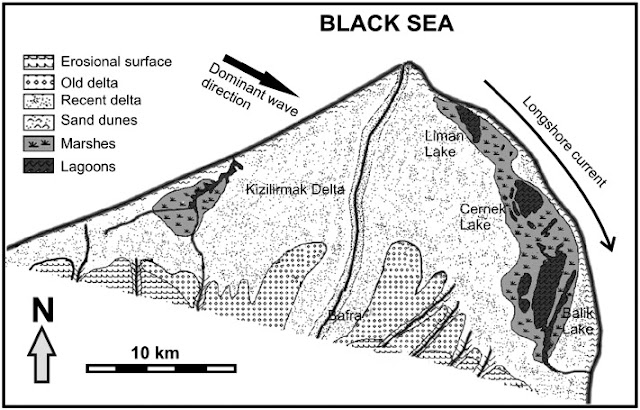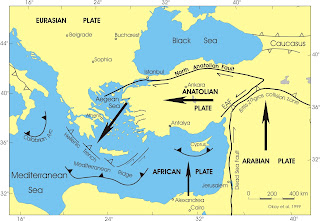Extreme Weather in Turkey
“Severe
weather refers to events such as thunderstorms, tornadoes, hurricanes,
blizzards, ice storms, mountain windstorms, heat waves and dust storms…and are
considered hazardous because of the energy they release and damage they are
capable of causing,” according to Keller and De Vecchio in their textbook, Natural Hazards.
Here is an interesting news segment of scientists
talking about recent incidents of severe weather in the U.S., and whether those
are the result of extreme weather or climate change. Although the length (24 minutes) is somewhat
long, the interviews with a cadre of scientists from highly regarded scientific
institutions throughout the U.S., along with insurance industry experts, as they
strive to create extreme weather events in a huge lab, make for fascinating
viewing:
The main
factors that shape the climate of Turkey give us insight about the prospective
changes in precipitation patterns. There are five factors that primarily shape
the climate of Turkey:
- General
circulation of the atmosphere
- The latitudinal
location
- Topography
- Distance to
moisture sources (mainly to the North Atlantic)
- The seas around
Turkey
A
violent storm in July 2017 wreaked havoc on Istanbul, with heavy rain, flooding,
strong winds of more than 60 MPH knocked down trees, and hail stones the size
of golf balls, damaged buildings. Ten
people were injured because of the storm.
Over
7,000 emergency workers were activated to assist with recovery from the storm which
injured 10 people, damaged 230 trees and uplifted an estimated 90 roofs. This was the second storm in 10 days that caused
injuries and damage throughout Istanbul.
Climates may be changing around the globe, but it
appears that Turkey is experiencing climate change at a more rapid rate than
that of other nations around the world:
Climate Change: Turkey & World
The single most important conclusion from this figure (above),
however, is that the annual temperatures in Turkey are rising. A look at temperatures
by season (graphic below) shows an even more detailed picture of how Turkey’s climate is
changing:
Summer and fall temperatures, in particular, have increased over the past five decades in Turkey, including on the Konya
Plain, which covers an area two times the size of Wales, and was once known as the
Turkey’s “wheat house.” However, dozens
of lakes in the region have dried up due to severe drought, critically impacting the area's agriculture, wildlife and local communities.
The mountain glaciers of Turkey have been retreating at about
32.9 feet annually. In
addition, the snow has begun to melt earlier in recent years, which raises the
water level of the snow-fed rivers earlier in the year.
These, and other factors, are clear indications
that Turkey is experiencing both extreme
weather and climate
change, and scientists agree that this trend is on the rise.
REFERENCES
Edward A. Keller & Duane E. DeVecchio, Natural Hazards: Earth’s Processes as Hazards, Disasters, and
Catastrophes. 2015.
Lutfi Sen, Omer, Climate Change in Turkey (as part of
the Mercator-IPC Fellowship Program)






Hello Linda! Great post this week about extreme weather. I like how you included the graphs/ charts. Also, your ways that the climate is shaped around Turkey makes your post a lot easier to understand when you are talking about the weather. Great post and keep up the good work!
ReplyDelete